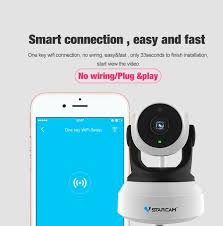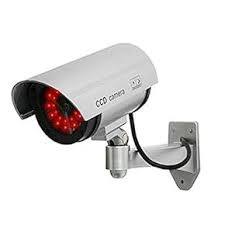Electronic Gate Access Control: Securing Your Property with Advanced Technology
In today’s fast-paced world, security is a top concern for both residential and commercial properties. Traditional lock and key systems are no longer sufficient to protect your premises from unauthorized access. This is where electronic gate access control systems come into play, providing a reliable and efficient solution to enhance security measures.
What is Electronic Gate Access Control?
Electronic gate access control refers to the use of advanced technology to regulate entry and exit points on your property. It involves the installation of electronic gates equipped with various authentication mechanisms that allow authorized individuals to enter while keeping unauthorized individuals at bay.
How Does it Work?
Electronic gate access control systems employ a range of technologies to ensure secure access. Here are some common components:
Keypad Entry: A keypad is installed near the gate entrance, requiring users to enter a unique code or PIN to gain access. This method provides a basic level of security by limiting entry only to those who possess the correct code.
Proximity Cards or Key Fobs: These small devices contain embedded chips that communicate with the gate’s reader when held in close proximity. Users simply need to present their card or fob for verification, allowing quick and convenient entry.
Biometric Authentication: This advanced technology utilizes unique physical characteristics such as fingerprints, iris patterns, or facial recognition for identification purposes. Biometric scanners are highly accurate and provide an additional layer of security by ensuring that only authorized individuals can gain access.
Remote Control: Some electronic gate access control systems offer remote controls that allow users to open or close the gate from a distance, providing convenience without compromising security.
Benefits of Electronic Gate Access Control:
Enhanced Security: Electronic gate access control systems significantly improve security by restricting entry only to authorized personnel or residents. This helps prevent unauthorized individuals from entering your property, reducing the risk of theft, vandalism, or other criminal activities.
Convenience and Flexibility: With electronic gate access control, there’s no need to carry around bulky keys or worry about lost or stolen keys. Access can be easily granted or revoked, ensuring that only authorized individuals have entry privileges.
Visitor Management: Electronic gate access control systems often include features like intercoms or video surveillance, allowing property owners to communicate with visitors before granting access. This adds an extra layer of security by enabling verification of the visitor’s identity.
Audit Trails: Many electronic gate access control systems provide detailed logs of entry and exit activities, allowing property owners to monitor who accessed the premises and at what time. This feature can be valuable for security purposes and investigations if any incidents occur.
Integration with Other Security Systems: Electronic gate access control systems can be integrated with other security solutions such as CCTV cameras, alarms, and intercoms, creating a comprehensive security network that enhances overall safety measures.
Conclusion:
Investing in an electronic gate access control system is a smart move towards securing your property effectively. With advanced authentication mechanisms and convenient features, these systems provide peace of mind by ensuring that only authorized individuals can enter your premises. Whether it’s a residential complex, commercial building, or industrial facility, electronic gate access control is a reliable solution for safeguarding your property in today’s security-conscious world.
Frequently Asked Questions: Electronic Gate Access Control Explained
- What is an electronic access control?
- What are the 3 types of access control?
- What are the 4 types of access control?
- What is gate access control?
What is an electronic access control?
Electronic access control refers to a security system that utilizes electronic devices and technology to regulate and monitor access to a physical space or facility. It replaces traditional lock and key mechanisms with advanced authentication methods, granting access only to authorized individuals while keeping unauthorized individuals out.
Electronic access control systems typically consist of several components working together:
- Authentication Devices: These devices are used to verify the identity of individuals seeking access. Common authentication methods include keypads, proximity cards or key fobs, biometric scanners (such as fingerprint or iris scanners), and even mobile applications.
- Control Panels: Control panels serve as the central hub of the access control system, managing the authentication devices and processing access requests. They store user information, control door locks or gates, and communicate with other components of the system.
- Door Locks or Gates: Electronic locks or gates are integrated into the access control system, allowing them to be remotely controlled based on authorization status. They can be electric strikes, magnetic locks, motorized gates, or other similar mechanisms.
- Management Software: Access control systems are often accompanied by software that enables administrators to manage user permissions, monitor access events in real-time, generate reports, and customize system settings.
- Monitoring and Reporting: Electronic access control systems can provide detailed logs of all access events, including successful entries and denied attempts. This information helps in monitoring security breaches or suspicious activities and can aid in investigations if needed.
- Integration with Other Systems: Access control systems can be integrated with other security systems such as CCTV cameras, alarms, intercoms, or intrusion detection systems for enhanced security measures.
Benefits of Electronic Access Control:
– Enhanced Security: Electronic access control provides a higher level of security compared to traditional lock and key systems by offering more robust authentication methods and better control over who can enter a facility.
– Access Flexibility: The system allows administrators to easily grant or revoke access privileges for individuals or groups, providing flexibility in managing access rights.
– Audit Trail and Reporting: The system generates detailed logs and reports, enabling administrators to track access events, monitor employee attendance, and investigate security incidents.
– Integration Capabilities: Electronic access control systems can be integrated with other security systems to create a comprehensive security network that enhances overall safety measures.
– Scalability: The system can be easily expanded or modified to accommodate changes in the facility’s requirements, such as adding new doors or granting access to additional areas.
Overall, electronic access control systems offer a more secure, convenient, and flexible way to manage access to physical spaces, making them an essential component of modern security solutions.
What are the 3 types of access control?
There are three main types of access control:
- Physical Access Control: This type of access control focuses on securing physical entry points to a building, facility, or specific areas within it. Physical access control systems typically involve the use of barriers such as gates, doors, turnstiles, or locks. These barriers can be controlled through various authentication methods such as key cards, keypads, biometric scanners (fingerprint or iris recognition), or even remote controls.
- Logical Access Control: Logical access control is concerned with securing digital resources and information systems. It involves the use of authentication mechanisms to ensure that only authorized users can access computer networks, databases, software applications, or specific files and folders. Common methods used for logical access control include username/password combinations, two-factor authentication (such as using a password and a unique code sent to a mobile device), smart cards, or digital certificates.
- Administrative Access Control: Administrative access control refers to the policies and procedures implemented by an organization to manage user privileges and permissions effectively. It involves defining roles and responsibilities for different individuals within the organization and assigning appropriate levels of access rights based on job requirements and security needs. Administrative controls include processes for user provisioning (creating new user accounts), deprovisioning (disabling or deleting accounts when no longer needed), password management policies, and regular audits to ensure compliance with security protocols.
These three types of access control work together to provide comprehensive security measures for both physical and digital assets within an organization. By implementing a combination of physical, logical, and administrative controls, businesses can maintain a secure environment while ensuring that authorized users have appropriate access to necessary resources.
What are the 4 types of access control?
There are four main types of access control systems commonly used in various settings:
- Physical Access Control: This type of access control involves physical barriers or mechanisms to restrict entry into a specific area. Examples include gates, turnstiles, locks, and biometric readers. Physical access control ensures that only authorized individuals can physically enter a designated space.
- Logical Access Control: Logical access control focuses on controlling digital or virtual access to computer systems, networks, and data. It involves the use of usernames, passwords, encryption, and other authentication methods to verify the identity of users before granting them access to sensitive information or resources.
- Role-Based Access Control (RBAC): RBAC assigns permissions and access rights based on predefined roles within an organization. Each role is associated with specific responsibilities and privileges. Users are then assigned to appropriate roles based on their job functions or responsibilities. RBAC simplifies access management by granting permissions based on roles rather than individual users.
- Attribute-Based Access Control (ABAC): ABAC is a more flexible and dynamic access control model that considers various attributes or characteristics of users, resources, and environmental factors when making authorization decisions. These attributes could include user roles, time of day, location, device type, and other contextual information. ABAC allows for more granular control over access permissions based on specific conditions.
These four types of access control systems can be used individually or in combination to create comprehensive security measures tailored to the needs of different environments and organizations.
What is gate access control?
Gate access control refers to the use of systems and technologies to regulate and control entry and exit points of a property through gates. It involves implementing measures that allow authorized individuals or vehicles to gain access while preventing unauthorized entry. Gate access control systems are designed to enhance security, improve efficiency, and provide convenience for property owners.
These systems typically include various components such as electronic gates, authentication mechanisms, and monitoring devices. They can be customized based on the specific needs and requirements of the property, whether it is a residential complex, commercial building, industrial facility, or gated community.
Gate access control systems can employ different methods of authentication, including:
Keypad Entry: This method requires users to enter a unique code or PIN on a keypad located near the gate. The correct code grants access.
Proximity Cards or Key Fobs: These small devices contain embedded chips that communicate with the gate’s reader when held in close proximity. Users simply need to present their card or fob for verification.
Biometric Authentication: Advanced technology such as fingerprint scanners, iris recognition systems, or facial recognition cameras can be used for identification purposes. Biometric authentication provides high accuracy and ensures that only authorized individuals can gain access.
Remote Control: Some gate access control systems offer remote controls that allow users to open or close the gate from a distance using radio frequency signals.
Gate access control systems provide several benefits:
Enhanced Security: By limiting entry only to authorized individuals or vehicles, gate access control systems significantly reduce the risk of unauthorized access, theft, vandalism, or other security breaches.
Convenience and Efficiency: Gate access control eliminates the need for traditional lock and key systems, making it easier for authorized individuals to enter without carrying physical keys. It also allows for convenient management of visitor access by providing features like intercoms or video surveillance.
Monitoring and Audit Trails: Many gate access control systems offer logging capabilities, allowing property owners to monitor and track entry and exit activities. This provides valuable information for security purposes and investigations if any incidents occur.
Integration with Other Security Systems: Gate access control systems can be integrated with other security solutions such as CCTV cameras, alarms, or intercoms, creating a comprehensive security network for the property.
Gate access control plays a crucial role in maintaining the security and safety of properties by effectively managing access points and preventing unauthorized entry.




